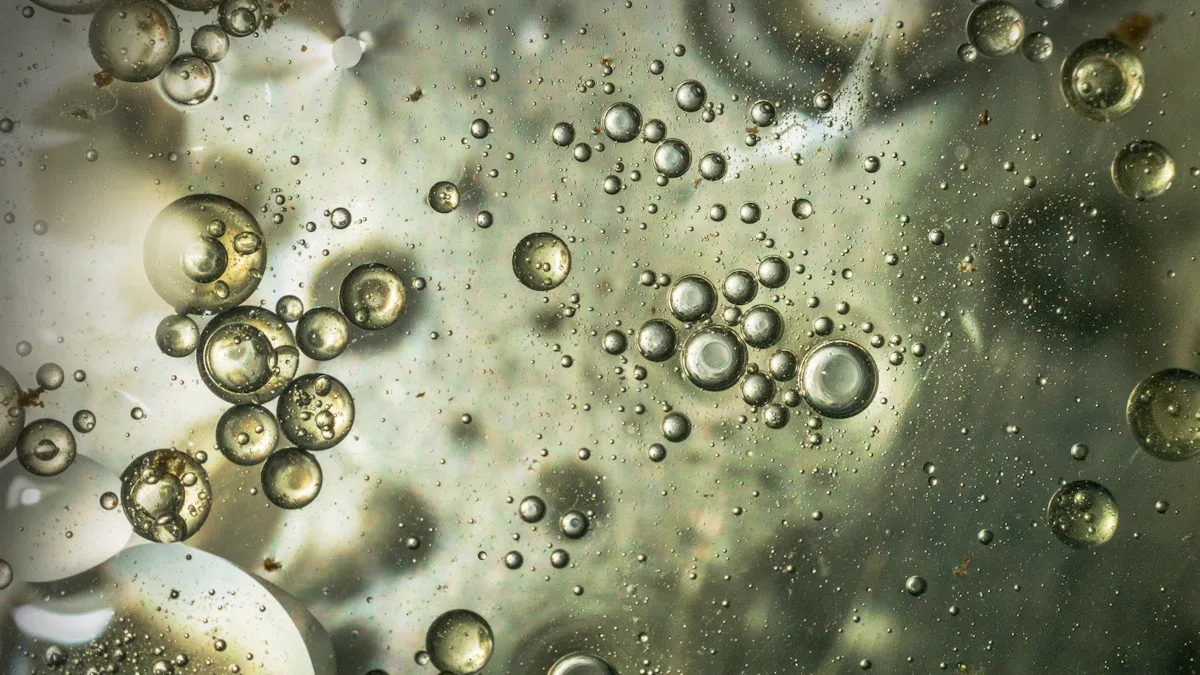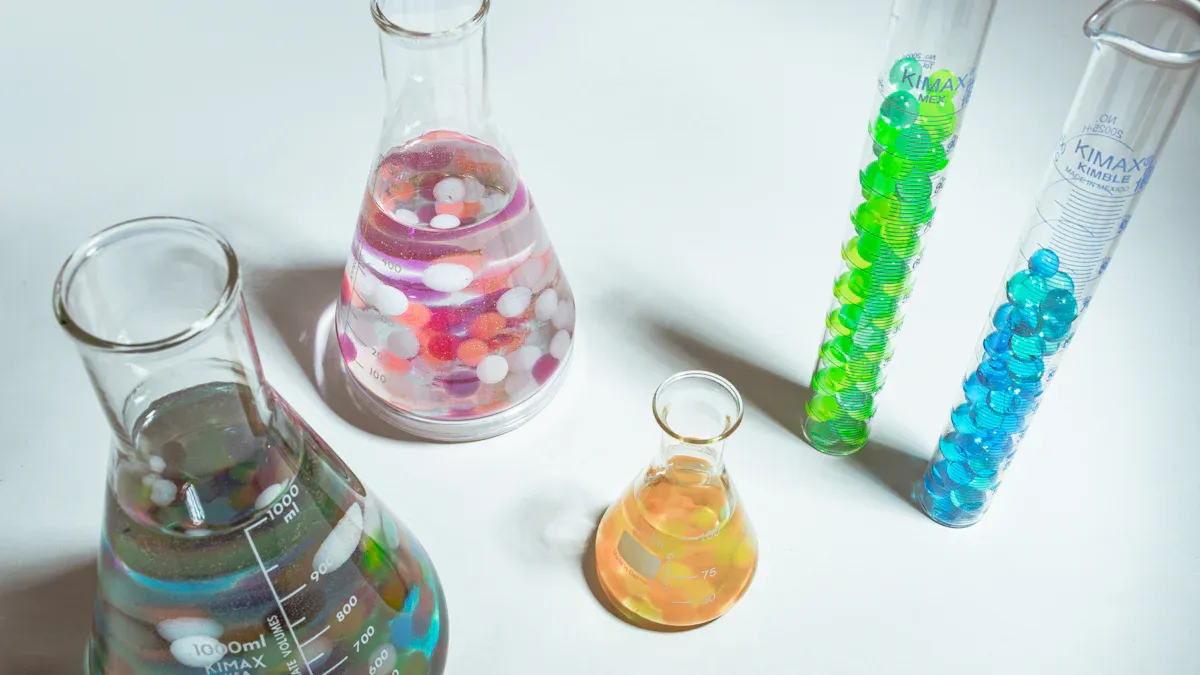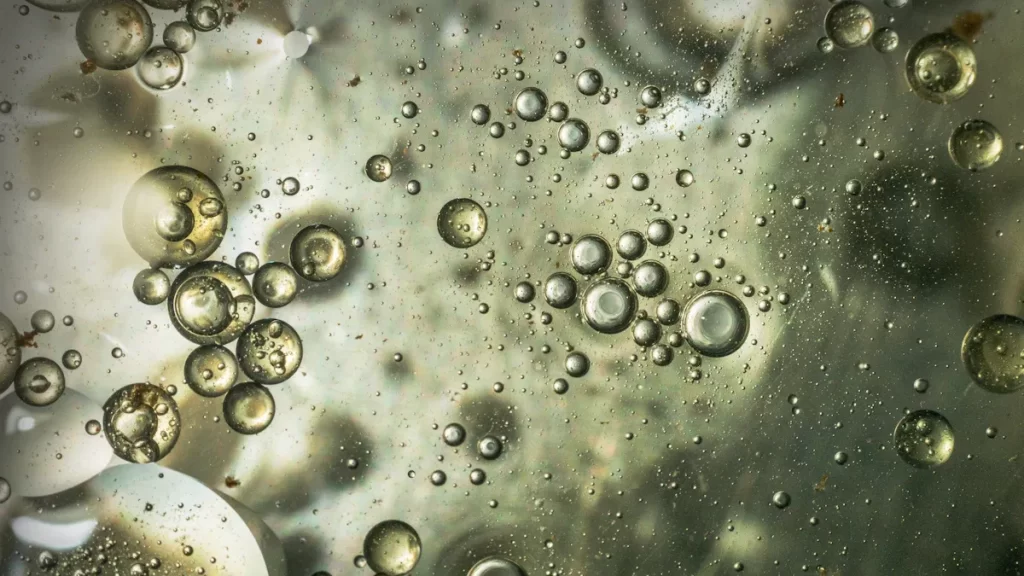
Inorganic radicals are powerful tools in modern deodorization. These highly reactive species target and neutralize odor-causing compounds at the molecular level. Their ability to break down complex chemicals makes them a game-changer for any deodorizer. You benefit from their efficiency, sustainability, and adaptability across various applications, from industrial to household use.
Key Takeaways
Inorganic radicals remove bad smells by breaking harmful molecules apart.
This method is eco-friendly since it skips strong chemicals and makes safe things like water and carbon dioxide.
These radicals work in many places, like factories or homes, and are great for getting rid of odors.
What Are Inorganic Radicals?
Definition and Characteristics
Inorganic radicals are highly reactive chemical species that play a crucial role in deodorization. These radicals are atoms, molecules, or ions with at least one unpaired valence electron. This unique structure makes them unstable and highly reactive, allowing them to interact with and neutralize odor-causing compounds effectively.
To better understand their characteristics, here’s a quick overview:
Term | Description |
|---|---|
Radical | An atom, molecule, or ion with at least one unpaired valence electron, making it highly reactive. |
Hydroxyl Radical | A specific radical (HO·) with one unpaired electron on the oxygen atom. |
Generation Methods | Radicals can be produced through redox reactions, ionizing radiation, heat, electrical discharges, and electrolysis. |
Among these, hydroxyl radicals stand out due to their exceptional reactivity. They are often referred to as the “detergents” of the atmosphere because of their ability to break down pollutants and odors.
Unique Properties That Aid Odor Removal
The properties of inorganic radicals make them ideal for deodorization. Their high reactivity allows them to attack and dismantle odor-causing molecules at the molecular level. For example, hydroxyl radicals can oxidize volatile organic compounds (VOCs), which are common sources of unpleasant smells. This oxidation process transforms harmful or odorous substances into harmless byproducts like water and carbon dioxide.
Another key property is their versatility. Inorganic radicals can target a wide range of odor-causing compounds, from sulfur-based molecules to ammonia. This adaptability ensures that they can be used in various environments, including industrial facilities, wastewater treatment plants, and even household products.
By leveraging these unique properties, you can achieve efficient and environmentally friendly odor removal, making inorganic radicals a cornerstone of modern deodorization technologies.
How Inorganic Radicals Work in Deodorization

Chemical Mechanisms of Odor Neutralization
Inorganic radicals neutralize odors by breaking down odor-causing molecules through chemical reactions. These radicals, such as hydroxyl radicals, initiate oxidation processes that dismantle complex compounds. For example, when a radical encounters a volatile organic compound (VOC), it reacts with the VOC’s molecular structure, converting it into harmless byproducts like water and carbon dioxide. This process ensures effective odor removal without leaving behind harmful residues.
You can think of these radicals as molecular “cleaners” that target and eliminate odors at their source. Their high reactivity allows them to interact with a wide range of odor-causing substances, including sulfur compounds and ammonia. This versatility makes them an essential tool in modern deodorization technologies.
Role of Hydroxyl Radicals in Hydroxyl Deodorization
Hydroxyl radicals play a central role in hydroxyl deodorization. These radicals, often referred to as the “detergents” of the atmosphere, are highly effective at breaking down pollutants and odors. In hydroxyl deodorization, hydroxyl radicals are generated through advanced oxidation processes, such as UV light or ozone reactions. Once produced, they rapidly react with odor-causing molecules, oxidizing them into non-odorous substances.
This method offers several advantages. It provides fast and thorough odor removal, works in various environments, and avoids the use of harsh chemicals. Whether you’re dealing with industrial emissions or household odors, hydroxyl deodorization delivers reliable results.
Examples of Other Effective Radicals (e.g., Superoxide)
While hydroxyl radicals are the most well-known, other radicals like superoxide also contribute to odor removal. Superoxide radicals, formed by the reduction of oxygen molecules, exhibit strong oxidative properties. They can degrade stubborn odor-causing compounds, making them valuable in applications like wastewater treatment and air purification.
By combining different radicals, you can enhance the efficiency of deodorization processes. This approach ensures comprehensive odor removal, even in challenging environments.
Advantages of Using Inorganic Radicals in Deodorization
Efficiency in Odor Removal
Inorganic radicals excel at breaking down odor-causing molecules quickly and effectively. Their high reactivity allows them to target a wide range of compounds, including volatile organic compounds (VOCs), sulfur-based molecules, and ammonia. This ensures thorough odor removal at the molecular level. Unlike traditional methods, which may mask odors, radicals eliminate them entirely by converting harmful substances into harmless byproducts like water and carbon dioxide.
Tip: Using radical-based technologies ensures you achieve faster and more reliable results, even in challenging environments like industrial facilities or wastewater treatment plants.
Environmental Benefits of Radical-Based Deodorization
Radical-based deodorization offers significant environmental advantages. These processes avoid the use of harsh chemicals, reducing the risk of secondary pollution. For example, hydroxyl radicals naturally degrade pollutants without leaving harmful residues. Additionally, the byproducts of these reactions, such as water and carbon dioxide, are environmentally benign.
By adopting this approach, you contribute to a cleaner environment while maintaining effective odor removal. This makes inorganic radicals an ideal choice for industries and households aiming to reduce their ecological footprint.
Versatility in Applications
The versatility of inorganic radicals makes them suitable for various deodorization applications. They work effectively in industrial air purification systems, wastewater treatment facilities, and even household products. Their ability to adapt to different environments ensures consistent performance across diverse settings.
Whether you need to address large-scale industrial emissions or everyday household odors, radical-based solutions provide a reliable and adaptable option. This flexibility highlights their value as a cornerstone of modern deodorization technologies.
Applications of Inorganic Radicals in Deodorization Processes

Industrial Air Purification as a Deodorizer
In industrial settings, air purification systems often rely on inorganic radicals to act as a deodorizer. These radicals, such as hydroxyl and superoxide, target pollutants and odors at their source. They break down volatile organic compounds and other harmful substances through oxidation. This process ensures clean, odor-free air without introducing secondary pollutants.
Ozone gas plays a critical role in generating radicals for industrial air purification. When ozone gas interacts with water vapor or UV light, it produces hydroxyl radicals. These radicals exhibit high hydroxyl treatment efficiency, making them ideal for removing smoke odor and other persistent smells. You can use this technology in factories, warehouses, and other facilities where odor control is essential.
Tip: Implementing radical-based air purification systems reduces maintenance costs and improves air quality, creating a healthier work environment.
Wastewater Treatment and Odor Removal
Wastewater treatment facilities benefit significantly from radical-based deodorization. Inorganic radicals neutralize odor-causing compounds like sulfur and ammonia, which are common in wastewater. Hydroxyl radicals, generated through advanced oxidation processes, excel in breaking down these substances.
Ozone gas enhances the efficiency of wastewater treatment by producing radicals that target stubborn odors. This approach not only removes unpleasant smells but also improves the overall quality of treated water. You can rely on radical-based systems to meet environmental regulations while maintaining cost-effective operations.
Household Products Utilizing Radical-Based Deodorization
Inorganic radicals have found their way into household products, revolutionizing odor control. Air purifiers, cleaning sprays, and even laundry detergents now incorporate radical-based technologies. These products use hydroxyl radicals to eliminate odors caused by smoke, pets, and cooking.
Ozone gas often serves as the precursor for generating radicals in household applications. Its ability to produce hydroxyl radicals ensures high hydroxyl treatment efficiency, delivering fast and effective results. You can trust these products to provide a safe and chemical-free solution for everyday odor removal.
Note: Radical-based household products offer a sustainable alternative to traditional deodorizers, reducing your exposure to harsh chemicals.
Inorganic radicals have redefined how you approach deodorization. Their unmatched efficiency, eco-friendly nature, and adaptability make them indispensable across industries.
Key Takeaway: By embracing radical-based technologies, you gain access to innovative solutions that eliminate odors at their source. These advancements ensure you stay ahead in tackling odor-related challenges, whether in industrial, environmental, or household applications.
Their potential for future innovation guarantees their lasting impact on deodorization processes.
FAQ
What makes inorganic radicals better than traditional deodorization methods?
Inorganic radicals eliminate odors at the molecular level. Unlike traditional methods, they don’t mask smells but convert harmful compounds into harmless byproducts like water and carbon dioxide.
Are radical-based deodorization processes safe for the environment?
Yes, they are eco-friendly. These processes avoid harsh chemicals and produce benign byproducts, such as water and carbon dioxide, ensuring minimal environmental impact.
Can you use radical-based deodorization in residential settings?
Absolutely! Many household products, like air purifiers and cleaning sprays, now utilize radical-based technologies to provide safe, chemical-free odor removal for everyday use.
Tip: Look for products labeled with hydroxyl or ozone-based technologies for effective and sustainable odor control at home.





